Anjanadri Hill, is located close to Anegundi, across the River Tungabhadra from Hampi.[1] This site holds immense historical and religious significance, drawing visitors from far and wide. Nestled amidst the boulder-strewn landscape of Karnataka, this enchanting hill is believed to be the birthplace of Lord Hanuman, the revered monkey god of Indian mythology.[2] Visiting Anjanadri Hill offers a unique opportunity to soak in the divine aura, explore ancient temples, and witness breathtaking natural beauty.

Table of Contents:-
- Quick Facts
- The Legend of Anjanadri Hill
- Hanuman Temple Complex
- Floating Stone
- Natural Beauty and Trekking Trails
- Sunrise and Sunset Views
- Market Street
- Monkeys on Anjanadri Hill
- Hanuman Amidst Natural Hill Formations
- Coracle Ride
- How to reach Anjanadri Hill?
- Must-See Attractions
- Tips for Visitors
- Gallery
- References
Anjanadri Hill offers a harmonious blend of spirituality, adventure, and natural beauty, making it a destination worth exploring for travelers to Hampi. Whether you’re drawn to its mythological significance, its scenic landscapes, or the thrill of trekking, the hill promises an enriching experience for all. As you stand atop its summit, overlooking the vast expanse below, you’ll feel a profound sense of connection to both the divine and the earthly realms, leaving you with memories to cherish for a lifetime.

Quick Facts
- Timing: 06:00 AM to 06:00 PM
- Entry Fee: No entry fee required
- Photography: Allowed
- Location: Google Maps
- Must-See Attractions
The Legend of Anjanadri Hill
According to Hindu mythology, Anjanadri Hill holds immense significance as it is believed to be the birthplace of Lord Hanuman. The birth of Hanuman is a legendary story filled with magic and wonder. There are two main ways this story is told:
The Divine Mango:
In one version, Hanuman’s mother, Anjana, was an angelic being who wished to become a mother. She and her husband, a brave monkey king named Kesari, prayed fervently to Lord Shiva and Parvati, the most powerful deities. Their prayers were answered! Shiva and Parvati gifted them a special, magical mango. Anjana ate the mango, and through this divine blessing, she became pregnant with Hanuman.
The Sacred Pudding:
Another way the story goes involves a King Dasharatha of Ayodhya performed the ritual of Putrakameshti yagna to have children. As a result, he received sacred pudding (payasam) to be shared by his three wives, leading to the births of Rama, Lakshmana, Bharata, and Shatrughna. By divine ordinance, a kite snatched a fragment of the pudding and dropped it while flying over the forest where Anjana was engaged in worship. Vayu delivered the falling pudding into Anjana’s outstretched hands, and she consumed it, leading to the birth of Hanuman.[3]
Vayu, the god of wind and Hanuman’s divine father, played a crucial role in Hanuman’s birth. He carried Lord Shiva’s blessings to Anjana, enabling her to conceive Hanuman.
Both stories highlight that Hanuman’s birth wasn’t ordinary. He was blessed by the divine, either through a magical mango or a sacred offering. The wind god, Vayu, also played a special role in both versions.
Anjana gave birth to Hanuman, who later became a prominent character in the epic Ramayana. Hanuman’s birth on this sacred hill symbolizes the union of divine grace and mortal perseverance, making Anjanadri Hill a site of profound spiritual significance.
The mythological connection to Lord Hanuman draws devotees and history enthusiasts alike to Anjanadri Hill. Pilgrims embark on the trek to the hilltop to pay homage to the deity and seek blessings for strength, protection, and success in their endeavors. The hill’s association with one of the most beloved and revered figures in Hindu mythology adds to its allure and sanctity.

Hanuman Temple Complex
The Hanuman Temple at the summit is a significant attraction of Anjanadri Hill, serving as a sacred pilgrimage center for Hindus. Though smaller in size compared to the grand structures in Hampi, the temple boasts a small dome-like tower that stands prominently atop the summit. A red flag flutters atop the tower, visible from afar, serving as a beacon of devotion and faith.

Inside the temple, a simple yet powerful image of Hanuman is carved into a rock, attracting devotees throughout the year. The idol exudes a sense of divine energy, drawing worshippers from far and wide who seek the blessings of the mighty deity. Additionally, within the temple complex, there is a small shrine dedicated to Lord Rama and his wife Sita. Devotees pay homage to this divine couple, whose epic tale of love, loyalty, and righteousness continues to inspire generations.
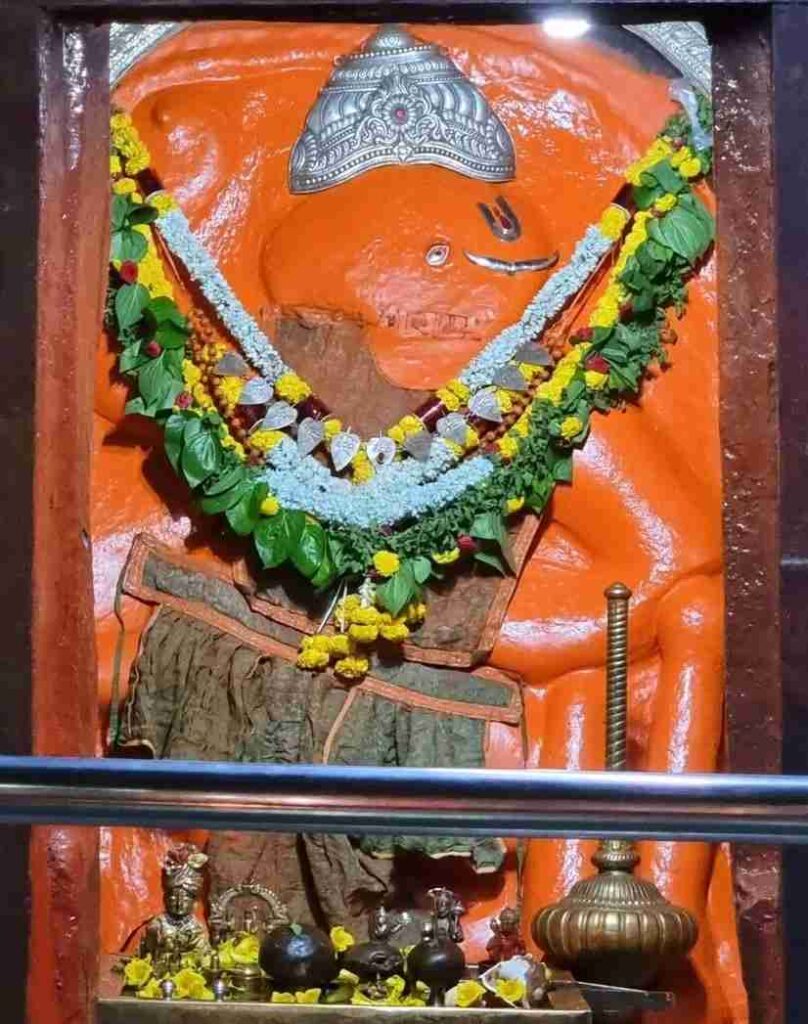
The serene ambiance and divine presence make the Hanuman Temple Complex a cherished spot for spiritual seekers. As visitors enter the temple premises, they are enveloped in an atmosphere of tranquility and reverence, where the worries of the world seem to fade away.
Throughout the day, the temple resonates with the sounds of prayers, hymns, and the ringing of bells, creating a symphony of devotion that uplifts the spirits of all who visit. Pilgrims offer flowers, incense, and coconuts as tokens of their devotion, seeking blessings for prosperity, protection, and spiritual enlightenment.
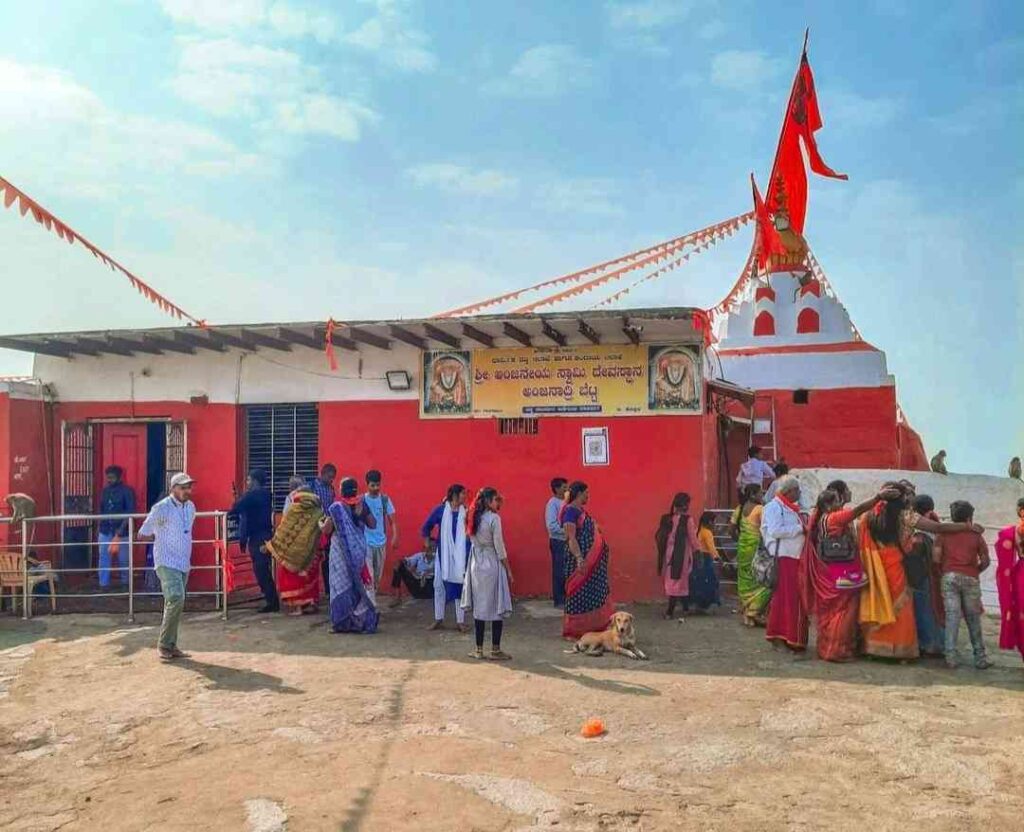
Floating Stone
In the temple, there is a remarkable sight—a stone floating in water within a large glass box. This stone holds a special significance as it is believed to be one of the stones used by Lord Rama to build the legendary bridge between Sri Lanka and India, famously known as the Ram Setu or Rama’s Bridge.
According to the epic Ramayana, Lord Rama, along with his army of vanaras (monkeys) and other allies, constructed a bridge over the sea to reach Lanka and rescue his beloved wife, Sita, from the demon king Ravana. This bridge was built using floating stones, which were engraved with the name of Lord Rama and were said to never sink.

The stone displayed in the temple is revered as one of these miraculous stones, endowed with divine power. Devotees believe that by offering prayers and paying homage to this stone, they can seek the blessings of Lord Rama for success, protection, and prosperity.
The presence of this stone serves as a tangible link to the mythological events described in the Ramayana, reinforcing the faith and devotion of pilgrims who visit the temple. It is a symbol of the enduring legacy of Lord Rama and the timeless tales of courage, righteousness, and devotion that continue to inspire millions around the world.
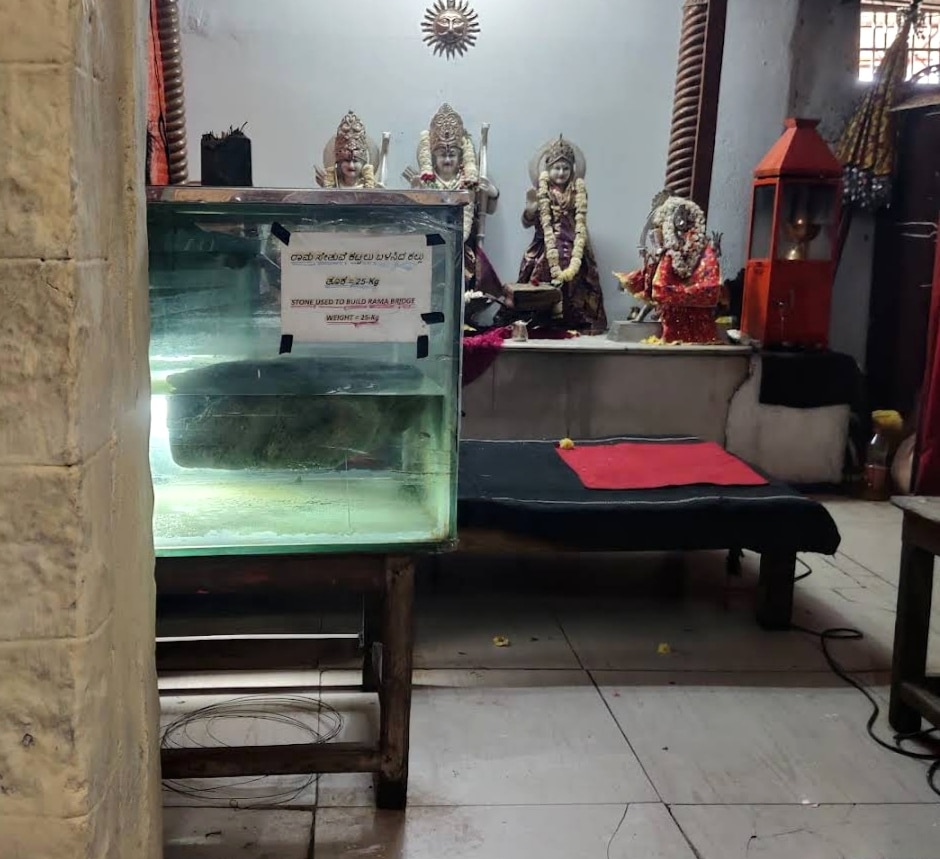
Natural Beauty and Trekking Trails
Anjanadri Hill is blessed with awe-inspiring natural beauty, making it a haven for nature lovers and trekking enthusiasts alike. The hill is enveloped by lush greenery, with vibrant flora adorning its slopes, creating a picturesque backdrop against the clear blue sky.
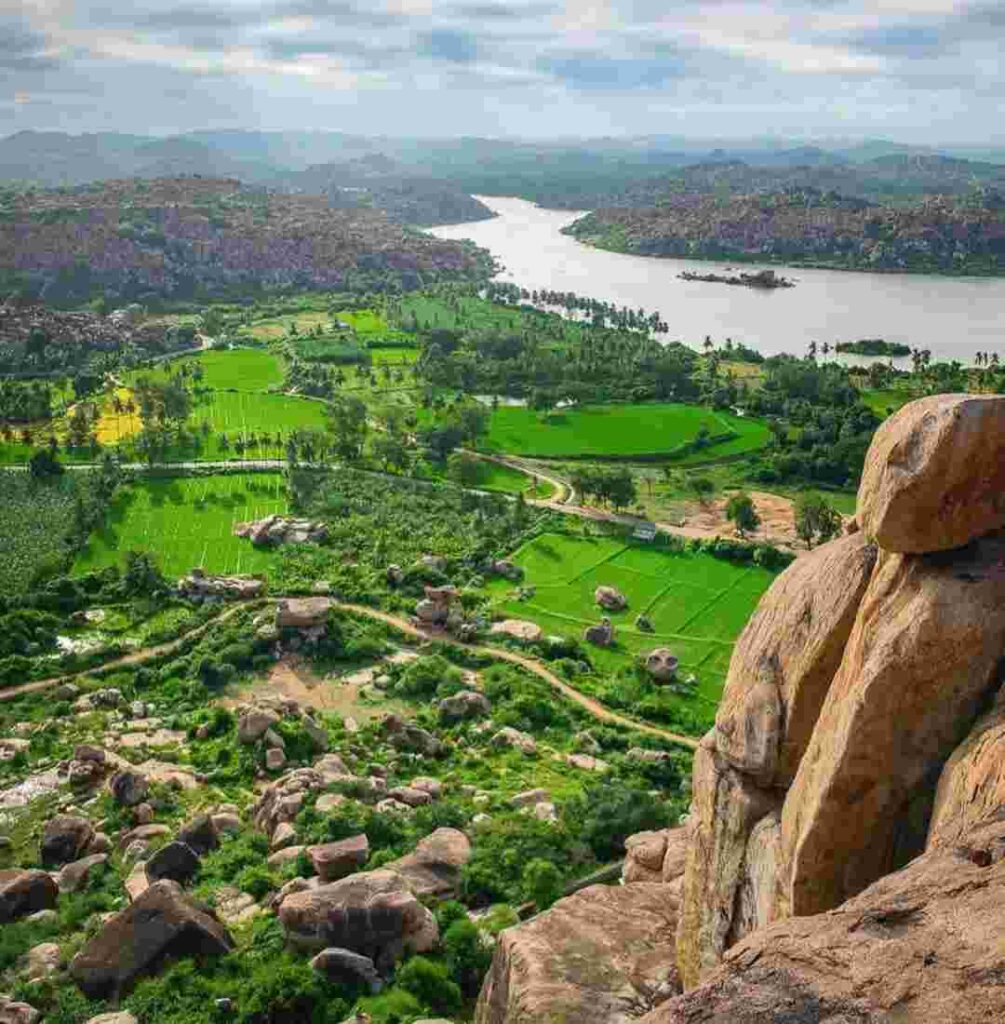
Trekking to the hilltop is an adventurous journey that promises to rejuvenate the soul. As visitors ascend, they traverse through rocky terrains and undulating pathways, enjoying the panoramic vistas of the surrounding landscape. The refreshing breeze and the melodious chirping of birds provide a soothing soundtrack to the trek, invigorating the senses and revitalizing the spirit.
Anjanadri Hill has a temple on top, accessible via 575 steps.[a] Part of the path is covered with a proper roof, providing shade from the sun. The steps are wide with some provision to sit and relax, allowing trekkers to take breaks and enjoy the serene surroundings. However, the last stretch can be narrow, passing under the rocks, and can get difficult when crowded. It would take at least 45 minutes to climb up, depending on one’s pace and the number of breaks taken along the way.
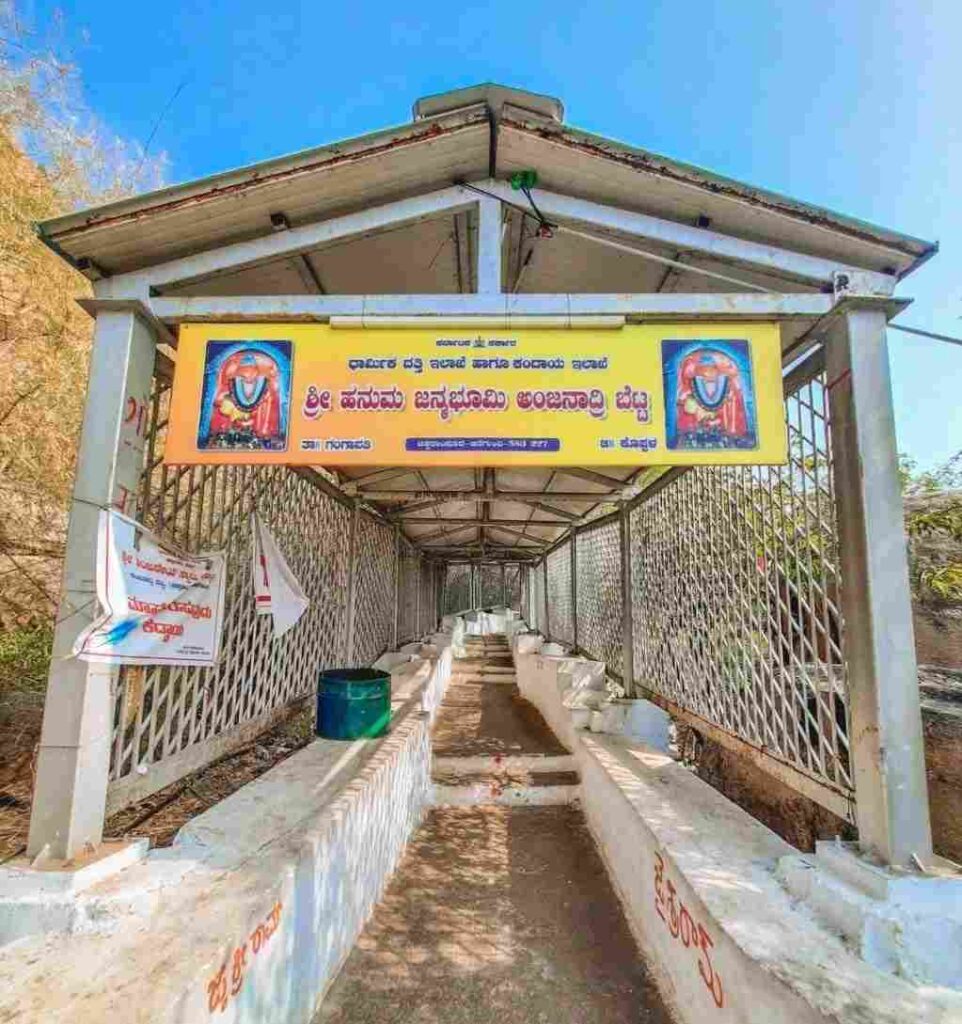
The trek offers breathtaking views of the Tungabhadra River, whose meandering course cuts through the landscape, adding to the charm of the surroundings. From the summit, trekkers can marvel at the iconic Virupaksha Temple, a UNESCO World Heritage Site, and the expansive ruins of the Vijayanagara Empire, which sprawl across the horizon.
At the summit, visitors are rewarded with panoramic vistas that stretch as far as the eye can see. The serene beauty of the landscape, coupled with the sense of accomplishment from completing the trek, creates a profound sense of peace and fulfillment.
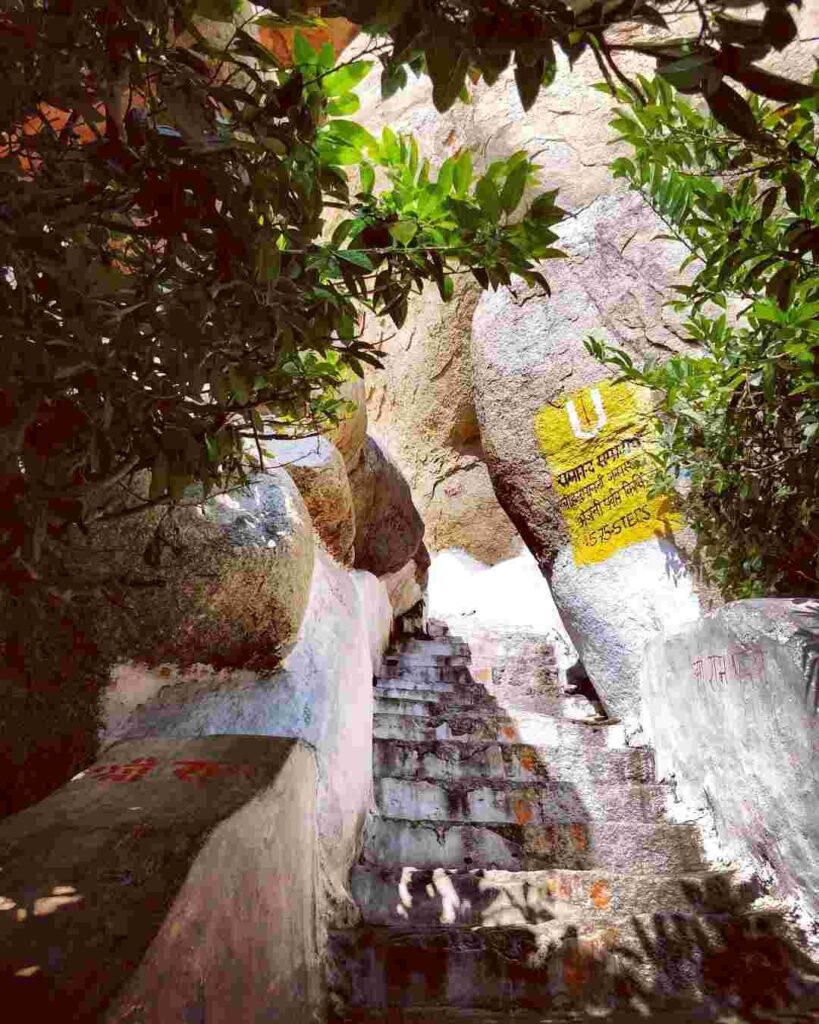
Sunrise and Sunset Views
Anjanadri Hill offers stunning views of both sunrise and sunset, making it a favorite destination for nature enthusiasts and photographers alike. Many visitors make it a point to reach the hilltop early in the morning to witness the breathtaking spectacle of the rising sun casting its golden rays over the Hampi landscape. The serene ambiance and the crisp morning air create a sense of calm and tranquility as the world awakens to a new day.
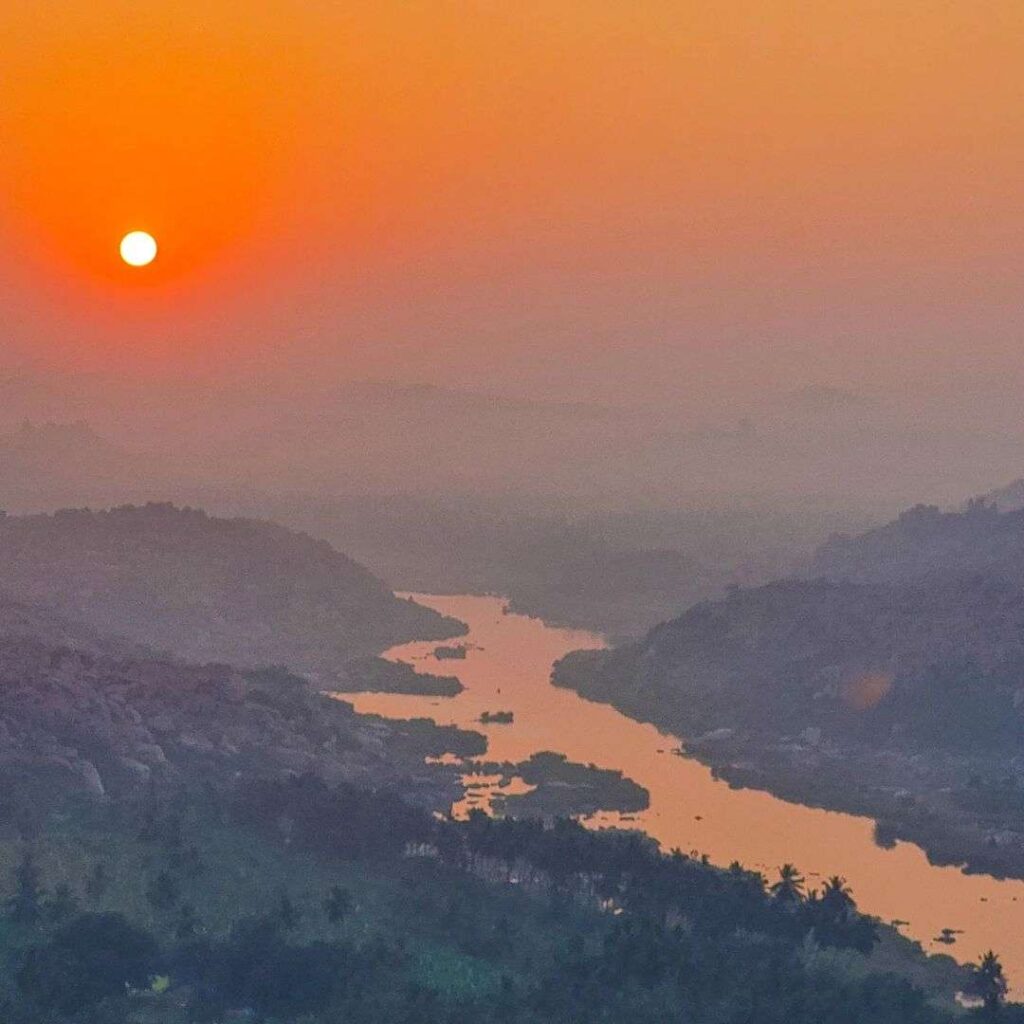
Similarly, during the evenings, Anjanadri Hill provides a magnificent vantage point to behold the sun setting behind the distant hills, painting the sky in vibrant hues of orange, pink, and purple. The tranquil atmosphere and the play of colors make these moments truly magical, offering a perfect opportunity for reflection and contemplation.
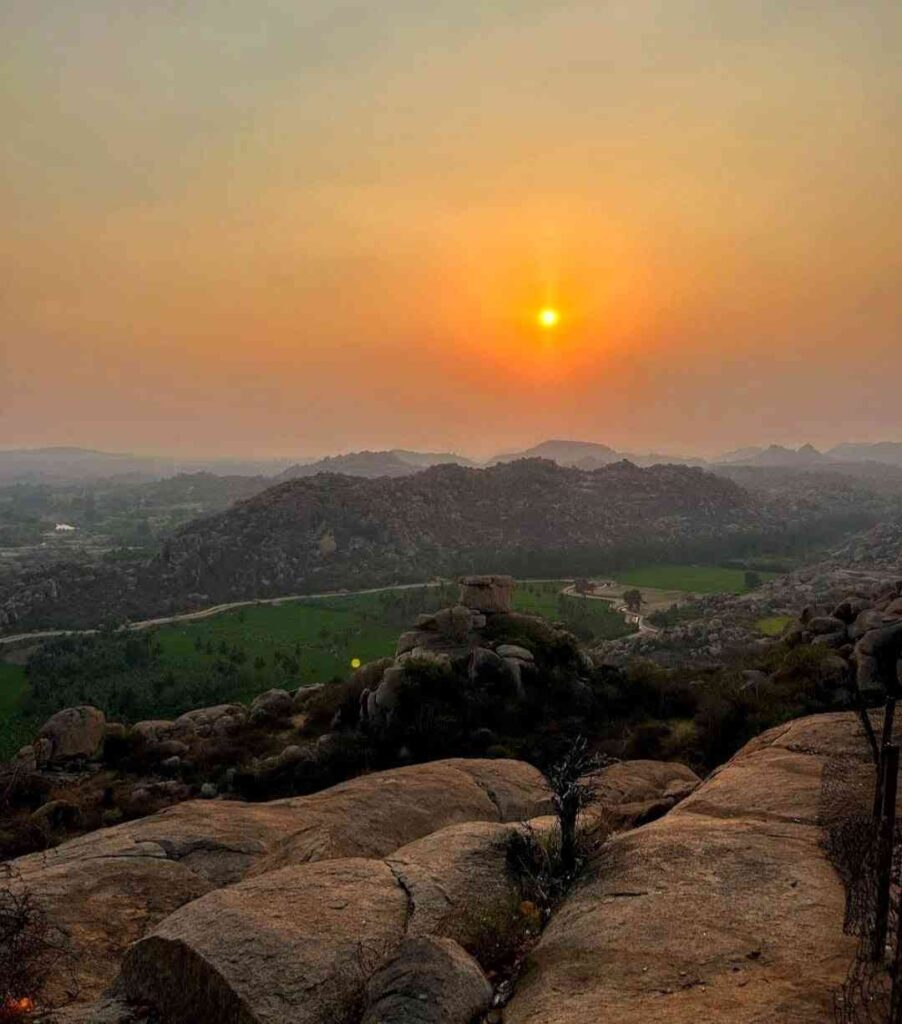
The panoramic vistas from the hilltop allow visitors to immerse themselves in the beauty of nature, with the Tungabhadra River winding its way through the landscape and the ancient ruins of Hampi bathed in the soft glow of the sun. As the day transitions into night, the hill becomes a sanctuary of peace, offering a respite from the hustle and bustle of everyday life.
Whether you’re an avid photographer capturing the beauty of nature or simply a traveler seeking moments of serenity and awe, witnessing the sunrise and sunset from Anjanadri Hill is an experience you won’t soon forget. It’s a reminder of the timeless beauty of the natural world and the enduring magic of Hampi’s landscape.
Market Street
Adjacent to Anjanadri Hill is Bazaar, a vibrant market street that adds to the charm of Hampi’s cultural landscape. This bustling thoroughfare showcases the local culture and craftsmanship of the region, offering visitors a delightful shopping experience.
Strolling through the narrow lanes of the market, visitors are greeted by a colorful array of shops selling traditional handicrafts, clothing, jewelry, and souvenirs. From intricately carved stone artifacts to vibrant textiles and handwoven shawls, there is something to suit every taste and budget. The market is not only a place to shop but also a cultural hub where travelers can immerse themselves in the vibrant atmosphere of Hampi. Local artisans display their skills, demonstrating age-old techniques passed down through generations.
Interacting with the friendly local vendors is a highlight of the experience, as they share stories about their craft and offer insights into the rich cultural heritage of the region. Visitors can haggle over prices, sample local delicacies, and learn about the significance of various handicrafts in the local traditions.
For travelers looking to take home a piece of Hampi’s charm, the Market Street is the perfect destination. Whether you’re searching for a unique souvenir or simply soaking in the lively ambiance, a visit to this vibrant bazaar is sure to leave a lasting impression.
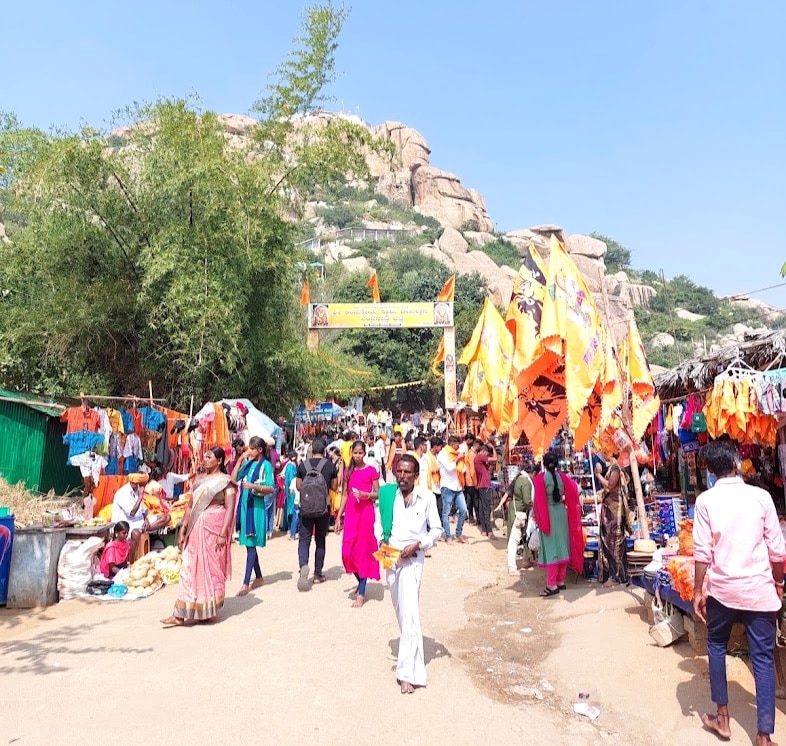
Monkeys on Anjanadri Hill
As Anjanadri Hill is associated with Lord Hanuman, it is no surprise that the area is home to a large population of monkeys. Visitors often encounter these playful creatures during their ascent to the hilltop. While they can be entertaining to observe, it is important to exercise caution and respect their space.

The monkeys are known to be curious and may approach visitors in search of food or simply out of curiosity. While interactions with them can be fun and memorable, it’s essential to avoid provoking them or attempting to feed them. Feeding monkeys can alter their natural behavior and lead to dependency on humans for food, which can have negative consequences for both the animals and visitors.
Carrying food items openly can attract the attention of monkeys and may lead to unwanted encounters. It is advisable to keep all food items securely packed and out of sight to minimize the risk of attracting monkeys.
Following the guidelines provided by the local authorities ensures a safe and enjoyable experience for both visitors and the resident monkeys. These guidelines typically include refraining from making sudden movements, keeping a safe distance from the animals, and avoiding direct eye contact, which may be perceived as a challenge.
In the event of a close encounter with monkeys, it is best to remain calm and composed. Slowly backing away from the animals while maintaining a non-threatening posture is usually sufficient to avoid any potential conflict. By respecting the natural habitat of the monkeys and adhering to the guidelines provided, visitors can enjoy observing these fascinating creatures while ensuring their own safety and the well-being of the animals.
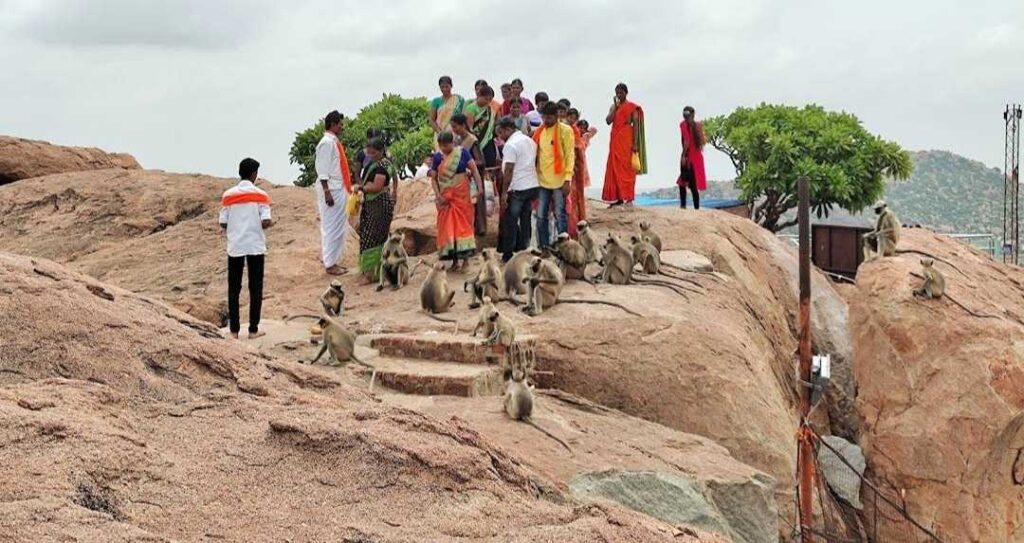
Hanuman Amidst Natural Hill Formations
In the tranquil setting of Anjanadri Hill, an imaginary image unfolds—Hanuman, the divine devotee, amidst the natural hill formations. Here, amidst the rugged terrain and lush greenery, one envisions the mighty Hanuman, revered for his strength, courage, and unwavering devotion. The contours of the hill seem to echo the majestic presence of the monkey god, whose legend is deeply intertwined with this sacred place.
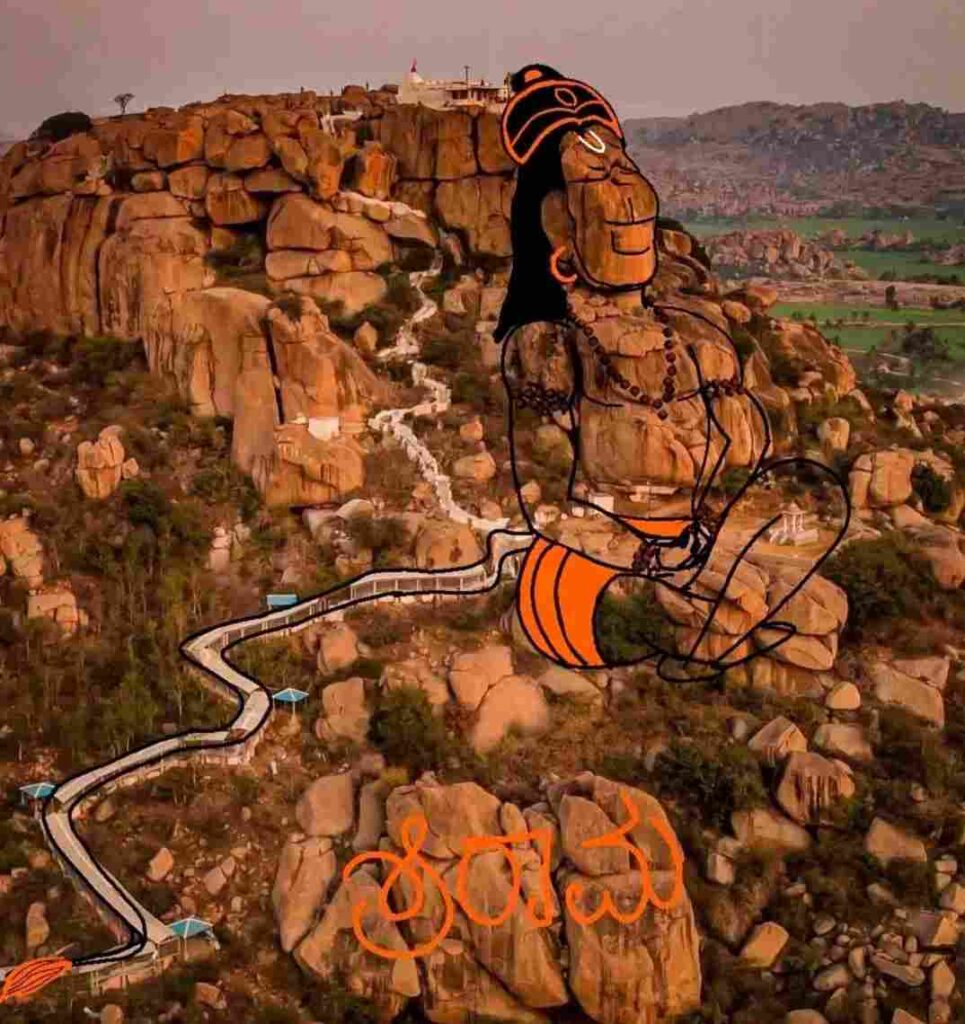
As the gentle breeze rustles through the trees and the sun casts its golden rays upon the landscape, one can almost visualize Hanuman his gaze unwavering, his demeanor exuding power and tranquility. The natural beauty of Anjanadri Hill serves as a fitting backdrop for this imaginary scene, enhancing the spiritual atmosphere and invoking a sense of awe and reverence.
In this serene tableau, Hanuman’s presence symbolizes courage, righteousness, and protection—a source of inspiration for devotees and seekers alike. Amidst the natural hill formations of Anjanadri, the imaginary image of Hanuman stands as a timeless testament to faith, devotion, and the eternal bond between man and the divine.
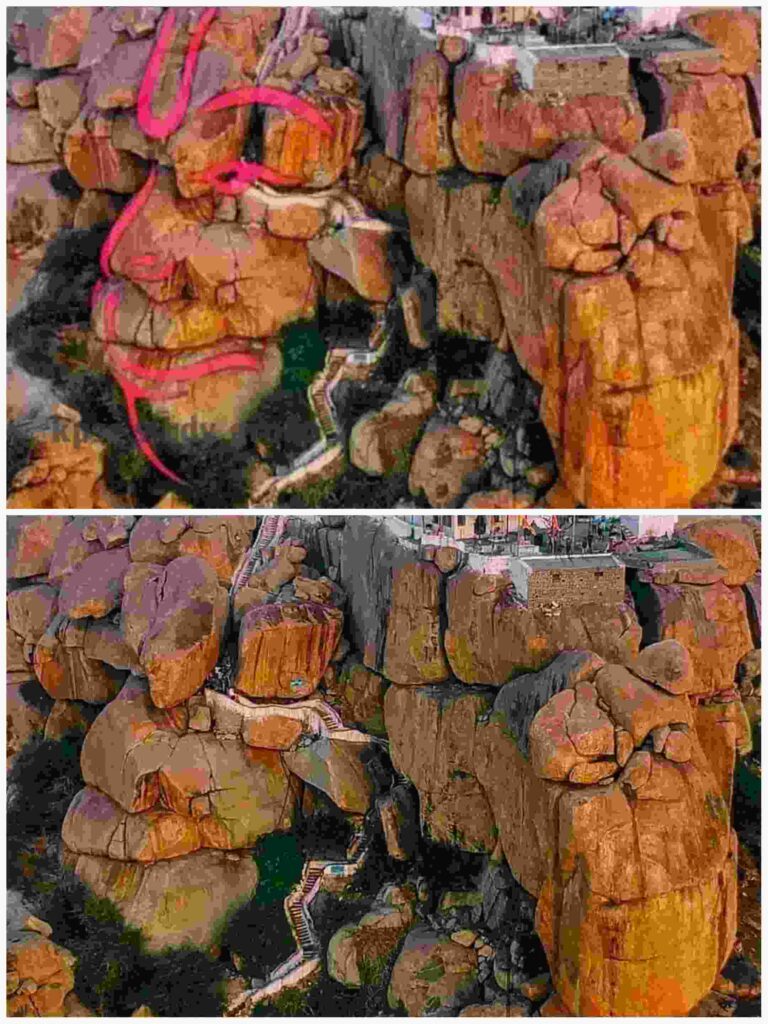
Coracle Ride on the Tungabhadra River
The Tungabhadra River flows near Anjanadri Hill, and taking a coracle ride along its gentle waters is a popular activity for tourists visiting Hampi. Coracles, traditional circular-shaped boats made of woven bamboo and coated with a layer of tar, offer a unique and memorable way to experience the river.
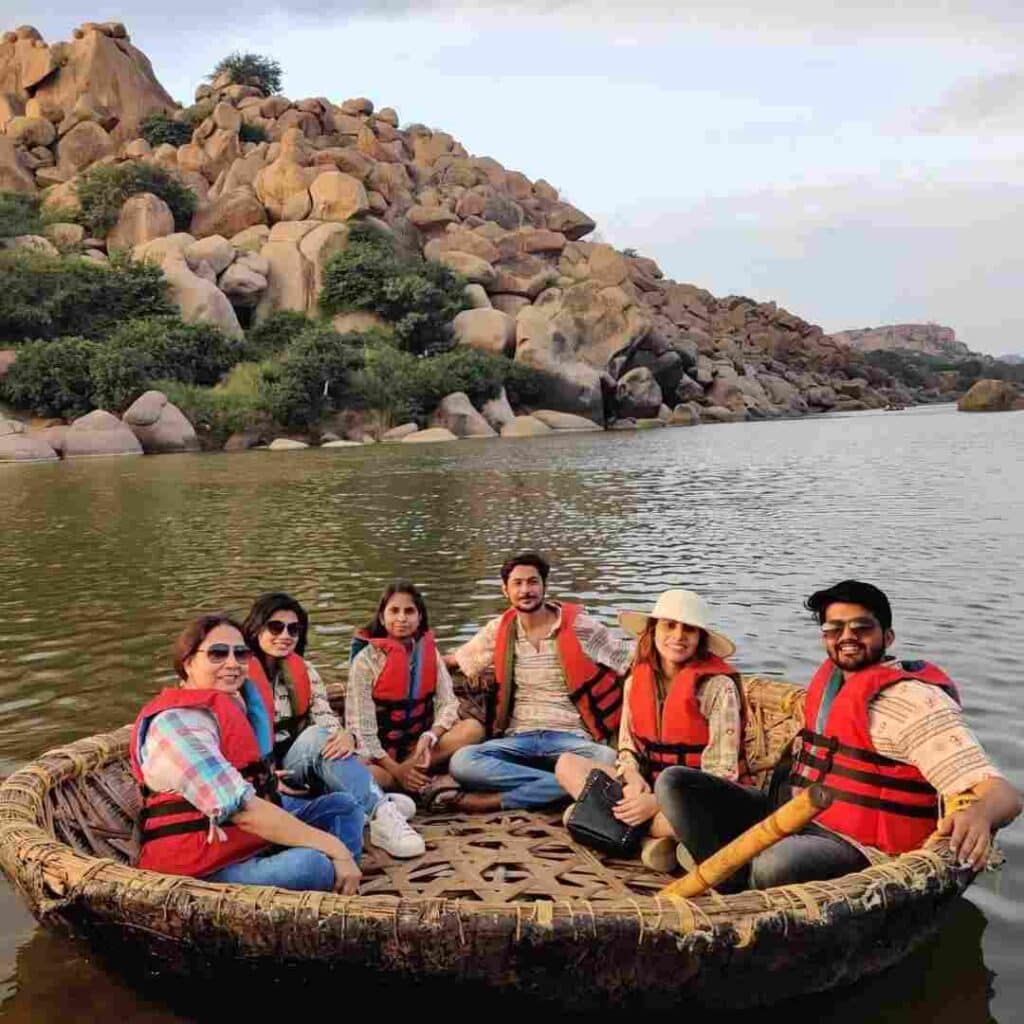
Drifting along the river in these rustic boats provides a peaceful and scenic experience, allowing you to appreciate the natural beauty and serenity of the surroundings. As you glide along the calm waters, you can take in panoramic views of the lush riverbanks, with towering palm trees swaying gently in the breeze.
Coracle rides offer a glimpse into the traditional way of life along the Tungabhadra River, as local fishermen go about their daily routines and children play along the riverbanks. It’s a chance to connect with the rhythms of nature and immerse yourself in the tranquility of the riverine landscape.
During the ride, knowledgeable boatmen often share fascinating insights into the history, culture, and ecology of the region, enriching your experience with their stories and anecdotes. For those seeking adventure, coracle rides can also include stops at scenic spots along the river, where you can disembark to explore hidden caves, ancient temples, and picturesque picnic spots.
Whether you’re a nature lover, history buff, or simply looking for a peaceful way to unwind, a coracle ride on the Tungabhadra River is an experience not to be missed during your visit to Hampi. It offers a refreshing break from the hustle and bustle of everyday life, allowing you to connect with nature and create lasting memories of your time in this enchanting destination.
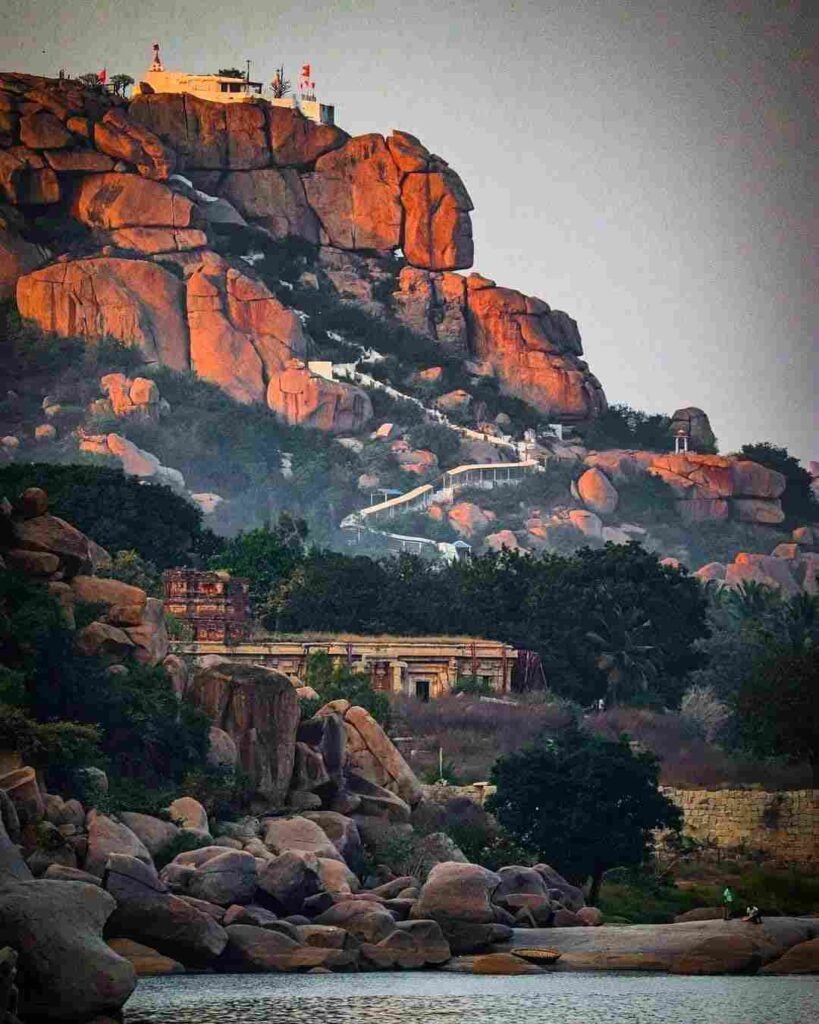
How to reach Anjanadri Hill?
There are several ways to reach Anjanadri Hill, each offering its own unique experience and adventure. Whether you prefer trekking through lush landscapes, taking a scenic coracle ride across the Tungabhadra River, or driving along picturesque highways, there are options to suit every traveler’s preference and mode of transportation. Let’s explore the various ways to reach this sacred hill, located near Hampi in Karnataka, India.
By Road:-
Many visitors choose to reach Anjanadri Hill by vehicle, whether by car, bus, or motorcycle. However, the final stretch typically requires parking the vehicle near the hill and continuing on foot.
- Bukkasagara Bridge route: The River Tungabhadra has a bridge at a place called Bukkasagara. This modern-day bridge is located about 11 km from Kamalapura. If you are visiting Hampi by car or any other vehicle, this bridge route is the most suitable option. Anjanadri Hill is approximately 7 km from the Bukkasagara Bridge on the Gangavathi-Huligi road (State Highway 130).
- Gangavathi-Huligi route: Buses traveling between Gangavathi (the Taluk headquarters) and Huligi (another religious place of importance on National Highway-50 near Hospet) pass through Anjanadri Hill and will make a scheduled or requested stop. For those traveling by their own vehicle from Bangalore/Chitradurga side, the most convenient route would be to take National Highway up to Huligi and then take a diversion near Huligi towards Sanapur and Gangavathi. The drive on the paved state highway offers scenic views of lush green paddy fields and towering boulders, making it a journey worth savoring.
By Air:-
Anjanadri Hill itself doesn’t have direct access by airport. However, the nearest airports are in Hubli, around 160 kilometers away from Anjanadri Hill, and Jindal Vijayanagara Airport, approximately 49 kilometers away. From these airports, travelers can hire a taxi or take a bus to reach Hospet and then proceed to Anjanadri Hill by road, as mentioned above.
Alternatively, travelers can also consider flying to Kempegowda International Airport Bengaluru, approximately 373 kilometers away, which is well-connected to major cities in India and abroad. From Bengaluru, they can take a domestic flight to Hubli or take a bus/train to Hospet and proceed to Anjanadri Hill by road.
By Train:-
Anjanadri Hill itself doesn’t have direct access by train. However, the nearest stations are well connected to major cities, and from there, you can easily reach Hampi by road and then finally to Anjanadri Hill. The nearest railway stations to Anjanadri Hill are Koppal, Hospet, and Munirabad. All three stations are about 40 kilometers away. Once you arrive at any of these stations, you can hire a taxi or rickshaw to reach Anjanadri Hill.
- Hospet Junction (HPT): This is a major railway station with trains connecting to various parts of the country. It’s around 30 kilometers away from Anjanadri Hill.
- Munirabad Railway Station (MRB): This is a smaller station compared to the other two, but it might be the closest station depending on your origin point. It’s around 19 kilometers away from Anjanadri Hill.
Coracle Ride:-
Visitors can also reach Anjanadri Hill by taking a coracle ride across the Tungabhadra River from Hampi. Upon reaching the other side of the river, trekkers can disembark and begin the ascent to Anjanadri Hill. The trek from the riverbank to the hilltop adds an adventurous element to the journey, as you navigate through the rugged terrain and lush vegetation. Along the way, you’ll encounter panoramic views of the surrounding landscape, with the majestic hill looming in the distance. However, we don’t recommend it to you because it charges more than 500 rupees per person.
Trekking:-
Trekking is the only way to reach top of the Anjanadri Hill. The trek begins from the foothills, and there are well-marked paths leading all the way to the hilltop. This path often includes approximately 575 steps, and occasionally shaded areas for resting. As you ascend, you’ll be surrounded by picturesque landscapes and scenic views. The trek is moderately challenging, so it’s advisable to wear comfortable shoes and carry drinking water. The journey takes approximately 30-45 minutes, depending on your pace and stops along the way.
Must-see attractions at Anjanadri Hill
This guide will take you through the must-see attractions of this sacred destination. From the iconic Hanuman Temple to panoramic views of the Tungabhadra River and the mystical floating stone, each attraction offers a unique and unforgettable experience. Let’s explore the wonders of Anjanadri Hill together!
Hanuman Temple Complex:
The Hanuman Temple at the summit is the main attraction of Anjanadri Hill. It houses a sacred idol of Lord Hanuman and offers breathtaking views of the surrounding landscape.
Floating Stone:
Anjanadri Hill is also known for the floating stone, which is believed to be one of the stones used by Lord Rama to build a bridge between Sri Lanka and India. This intriguing artifact is displayed in a large glass box at the temple complex, adding to the mystical allure of the hill.
Panoramic Views:
Anjanadri Hill offers breathtaking panoramic views of the surrounding landscape. From the hilltop, you can enjoy sweeping vistas of the Tungabhadra River, the sprawling ruins of Hampi, and the rocky terrain that stretches as far as the eye can see. The combination of natural beauty, historical remnants, and the tranquility of the surroundings makes it a mesmerizing sight.
Sunrise and Sunset:
Anjanadri Hill is a popular spot to witness both sunrise and sunset. The hill’s elevated position provides an excellent vantage point to observe the sun as it paints the sky with vibrant colors. Watching the sunrise and sunset from Anjanadri Hill is a magical experience, and the changing hues of the sky add to the serene atmosphere.
Monkey Encounters:
As the birthplace of Lord Hanuman, Anjanadri Hill is home to a large population of monkeys. Interacting with these playful creatures is an inevitable part of the visit. While they can be entertaining to observe, it’s important to exercise caution and maintain a safe distance. Avoid carrying food items or anything that might attract their attention.
Natural Beauty:
Anjanadri Hill is nestled amidst scenic natural beauty. As you trek up the hill, you’ll be surrounded by lush greenery, rocky outcrops, and the soothing sounds of nature. The hill offers a serene and peaceful environment, providing an opportunity to connect with the tranquility of the surroundings.
Tips for Visiting the Anjanadri Hill
As you plan your visit to this sacred site, it’s essential to be prepared and informed to make the most of your experience. In this guide, we’ll provide you with valuable tips to ensure a smooth and enjoyable visit to Anjanadri Hill. Let’s dive into the essential information you need to know before embarking on your journey to Anjanadri Hill.
Choose the right season:
The ideal time to visit is between October and February, when the weather is pleasant for climbing the hill.
Plan your accommodation:
Since Anjanadri Hill itself has limited options, stay in Hampi, which offers a variety of hotels and guesthouses. This gives you easy access to both the hill and the historical ruins.
Carry essentials:
Pack comfortable walking shoes with good grip for the climb. A water bottle is a must, especially during the hotter months. Sunscreen and a hat can provide protection from the sun.
Be Prepared for the Trek:
If you plan to trek to the summit, be prepared with essentials like snacks, first aid kit, and a fully charged phone. Also, inform someone about your trekking plans for safety.
Dress modestly:
As you’ll be visiting a temple, dress modestly, covering your shoulders and knees.
Temple etiquette:
Remove your footwear before entering the temple complex. Maintain silence and observe devotees engaged in prayer.
Monkey business:
Be mindful of monkeys around the hill. Avoid carrying food items openly, and don’t attempt to feed them.
Stay hydrated:
Especially during the summer, ensure you drink plenty of water throughout the climb.
Pace yourself:
The climb involves around 575 steps. Take your time, rest when needed, and enjoy the views.
Be aware of your belongings:
Keep your valuables secure, especially in crowded areas.
Learn about the legends:
Familiarize yourself with the stories and myths associated with Anjanadri Hill. This will add another layer of significance to your visit.
Carry a camera:
Capture the breathtaking panoramas and the intricate details of the temple architecture.
Respect the local culture:
Be mindful of local customs and traditions. Engage with the local people and shopkeepers with respect.
Use Restrooms at the Base:
There are no restrooms or toilets at the top of the hill, so please use the facilities available at the base of the hill before beginning your ascent.
Gallery:-
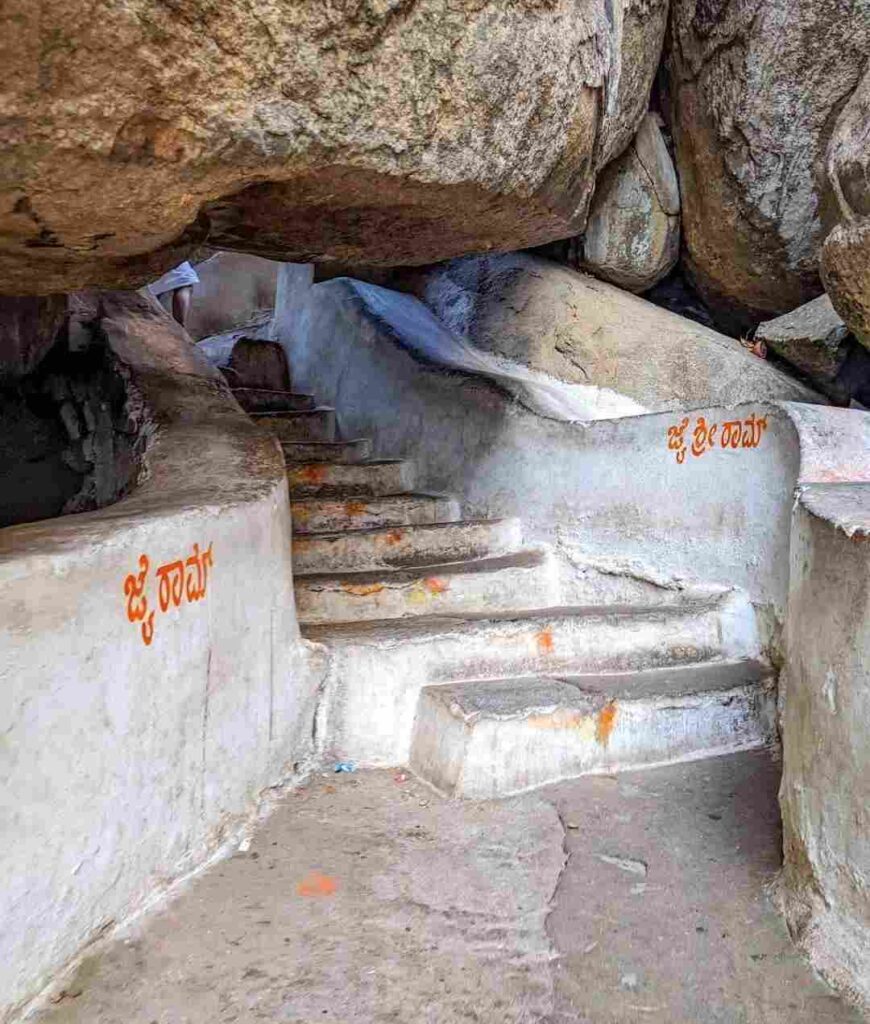
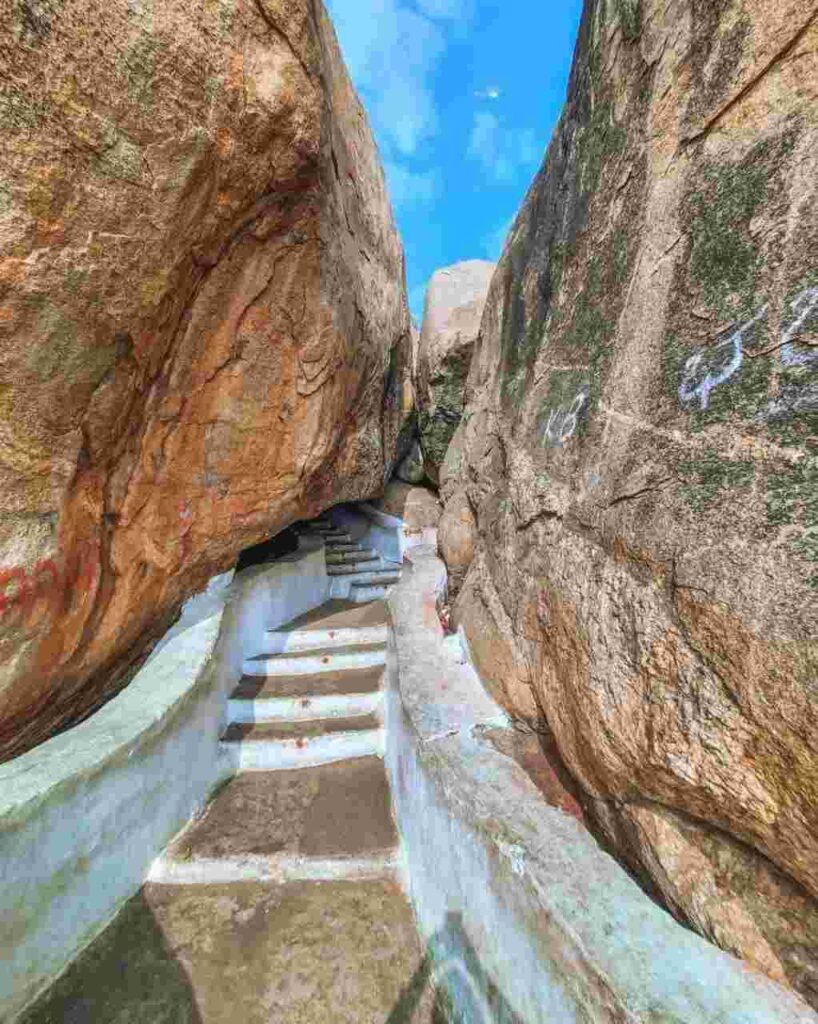


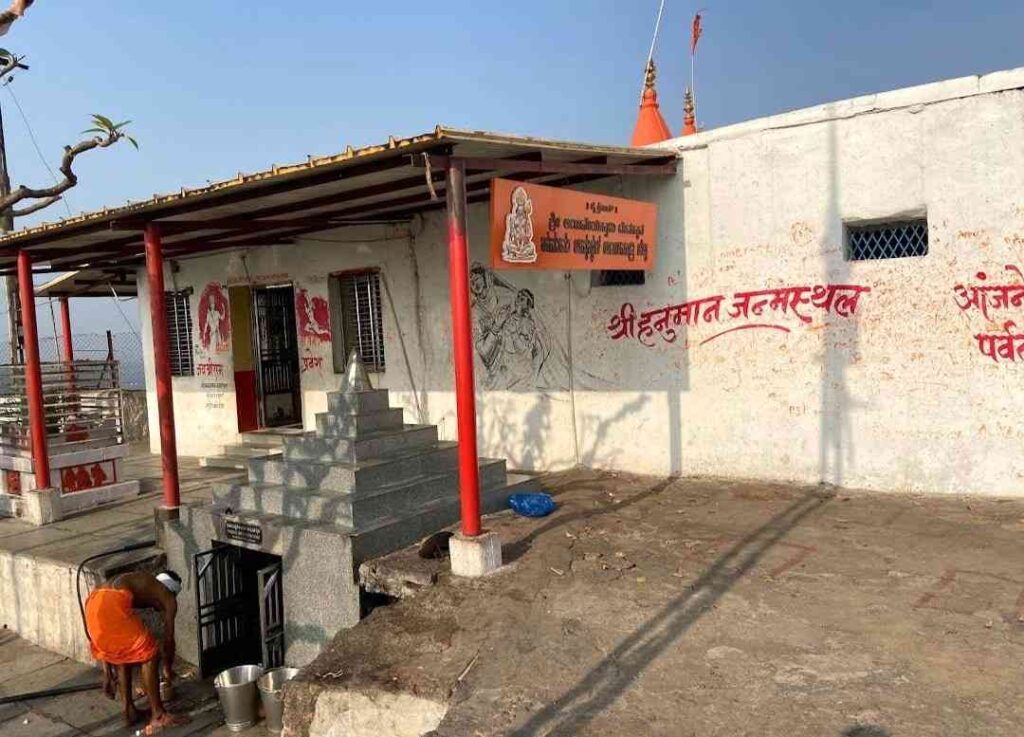
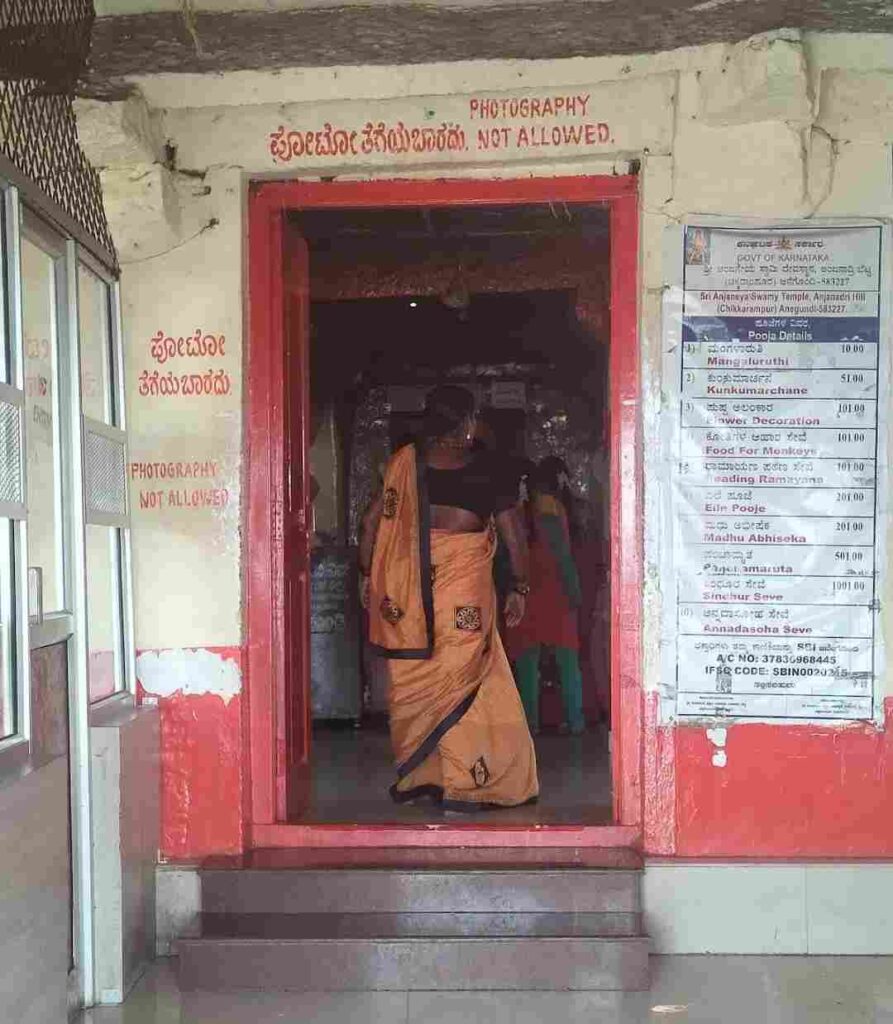
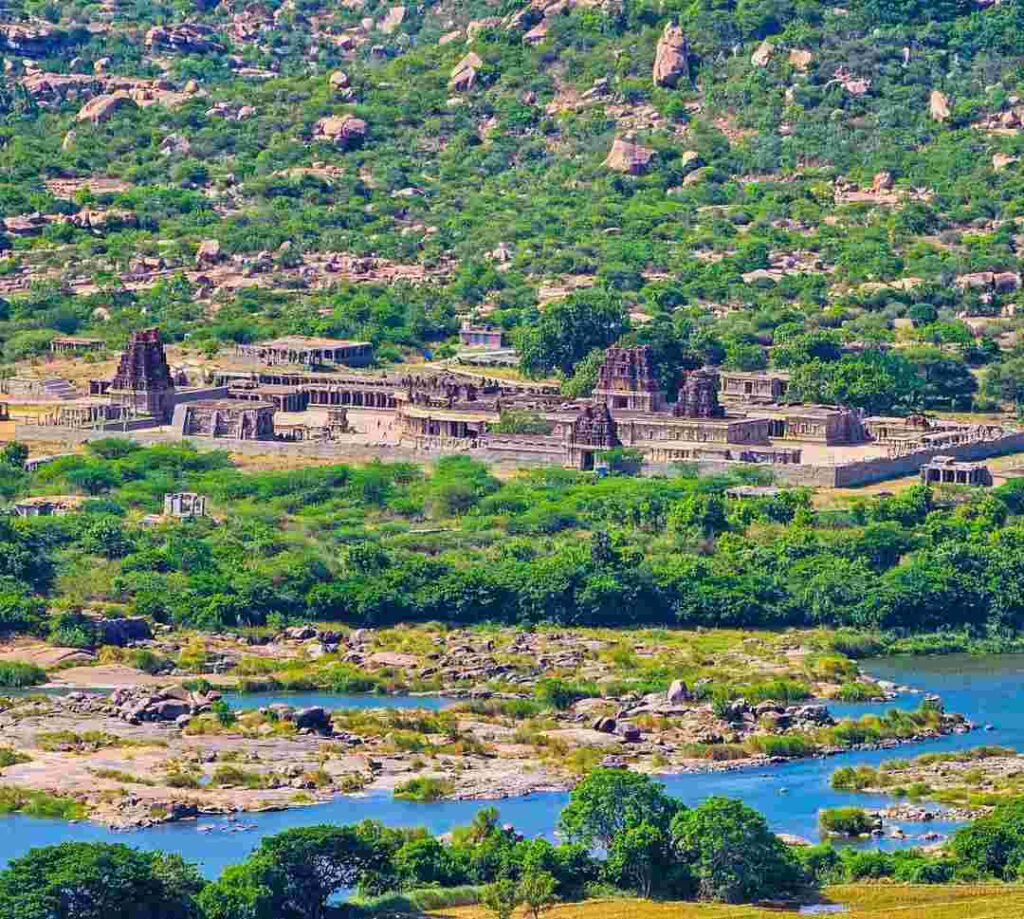
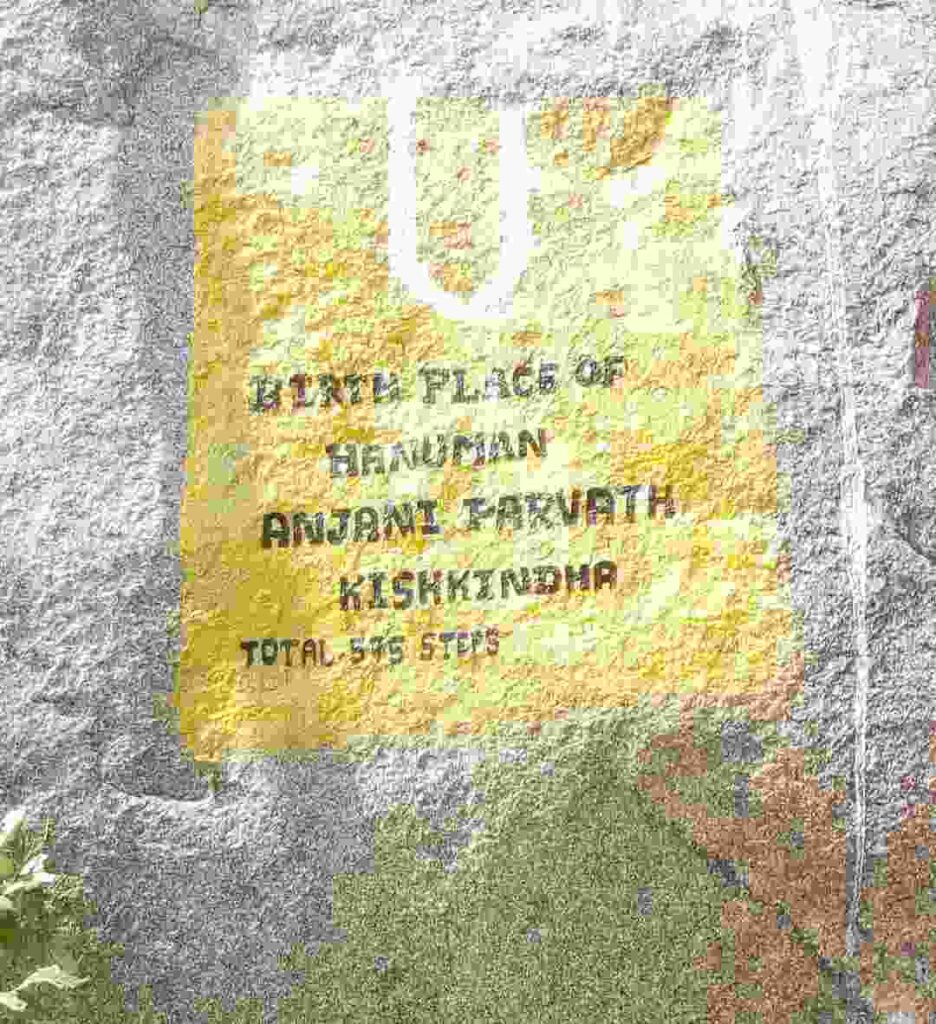
References:-
References from the Following Sources;
- ^[1] – Anjanadri Parvata – Koppal District
- ^[2] – Anjanadri Hill- The Birthplace of the Hindu God, Hanuman – Karnataka Tourism
- ^[3] – Birth of Hanuman – Lord Hanuman